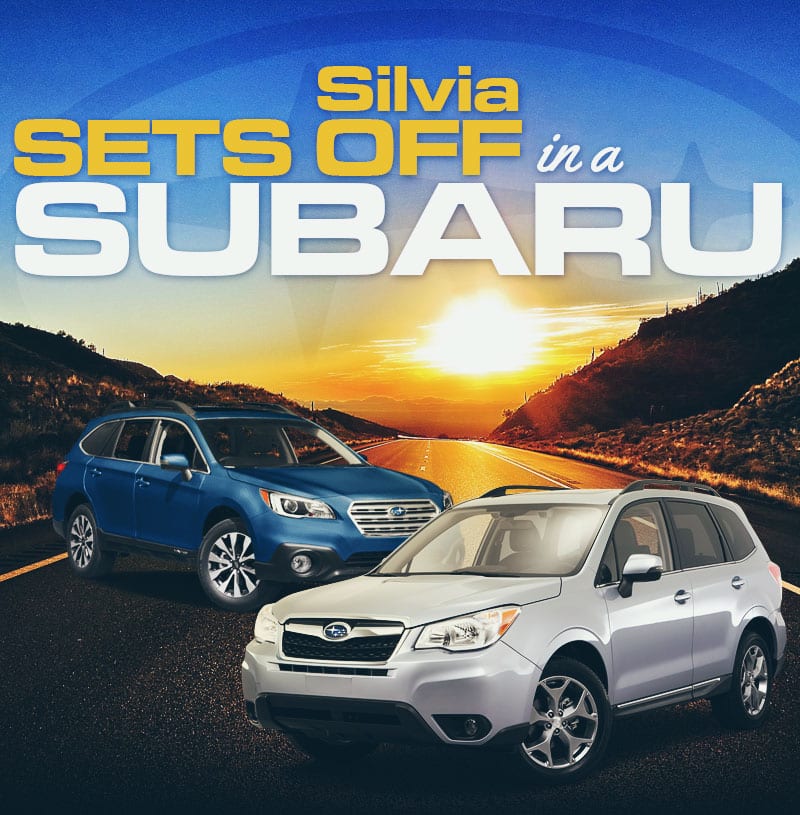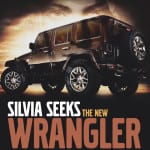With Jack Frost already threatening the New England area, I find myself reconsidering my choice of vehicle and eager to go shopping for a new car. Currently, I’ve been making my daily one-hour commute in a 2015 Subaru Impreza.
Although it’s been a reliable car, I find myself wondering about something bigger, heavier, and more winter road-worthy. Granted, I drive across a beautiful setting between my home and office, but my commute takes me through some seriously rural areas with questionable road surfaces that often require some twisty maneuvers behind the wheel.
And since it is kind of isolated out this way, I’d rather not find myself stranded on the side of the road because my sedan couldn’t quite negotiate the grade.
But, I do like my Subaru, so I decided to shop around within the brand’s upcoming models and targeted the 2016 Forester and 2016 Outback for further inspection. Here’s what I found…
Crossing Over in the 2016 Subaru Forester
Thinking that I might want to sit higher for better visibility when the snow starts falling, I looked at the Subaru Forester first. I’ve actually driven the Forester before, but downsized several years ago, after changing jobs and not needing as much cargo space…or car payment, for that matter. So, I was curious to see what set the new Forester apart from the rest of the compact crossover crew.
Apparently quite a bit, considering the six trim levels available to consumers, ranging from the standard 2.5i to the 2.5i Premium, 2.5i Limited, 2.5i Touring, outfitted with a four-cylinder 2.5-liter engine, able to generate 170 horsepower and 174 lb.-ft. of torque, operated by standard six-speed manual transmission or optional continuously variable transmission (CVT).
The other two trims, represented by the 2.0XT Premium and 2.0XT Touring are equipped with a turbocharged 2.0-liter four-cylinder engine and produce 250 horsepower and 258 lb.-ft. of torque, exclusively operated by the CVT.
I was concerned about upgrading to the Forester because I assumed that doing so would compromise fuel efficiency. Fortunately, that is not the case. Despite being a crossover, the 2016 Forester boasts impressive ratings for the class, returning outstanding figures of 27 mpg combined from the all-wheel drive 2.5i models, while those equipped with the manual transmission get 25 mpg combined.
And, according to Edmunds, the Forester is pretty zippy, able to reach 60 mph from a standstill in 9.0 seconds. But let’s be honest, I’m not looking at crossovers for speedy acceleration and neither are most consumers. Most of us want a crossover for a more confident stance on the road when driving conditions turn challenging.
However, Subaru has made more muscle available via the 2.0XT line, which makes the zero to sixty mph dash in a remarkably quick 6.3 seconds, while still maintaining competitive fuel efficiency at 25 mpg combined.
Typical for the Subaru brand, the 2016 Forester earned outstanding safety results from federal crash testing, as well as the Insurance Institute for Highway Safety’s top return of “Good,” as well as “Superior” for the available emergency brakes.
For the first time, a crossover is giving the Honda CR-V some competition with respect to cargo space. The new Forester boasts 34.4 cubic feet of space behind the back seats, which more than doubles to 74.7 cubic feet after the seats are folded down. These measurements best the Honda CR-V by about four cubic feet.
What’s more, the capability, comfort, and safety of the new Forester all come at an affordable starting price of $22,395.
A great option, but still, not yet entirely sold on returning to the Forester, I decided to scope out something completely different. I’ve never driven a wagon before, unless you count a Radio Flyer, and so I turned my attention to the 2016 Subaru Outback.
The 2016 Subaru Outback – Wagon Wheels
Actually, the Outback is also considered a crossover of sorts. Built on the same platform of the Subaru Legacy sedan, and boasting more ground clearance at 8.7 inches than most in the truck-based SUV segment, the Outback is unusual, but capable.
Able to seat five, there are four trims to take into account with the new Outback. Starting with the 2.5i, 2.5i Premium, 2.5i Limited, and finally the 3.6R Limited, the Outback is designed with adventure in mind, but has been refreshed for 2016 with higher-end materials. Still ruggedly capable, the new Outback now places a higher premium on comfort with available upgrades like leather upholstery, suspension tuned for comfort, and heated seats.
Depending on trim level, the Outback is outfitted with one of two possible engines. Standard power comes from the 2.5-liter four-cylinder, able to produce 175 horsepower and 174 lb.-ft. of torque, complemented by a four-wheel drive system operated by a CVT. A neat feature of this setup comes from the controls mounted on the steering wheel, which mimic a six-speed manual transmission.
Now, the Outback, powered by the entry-level engine, is kind of pokey – at least, according to performance testing completed by Edmunds. It took the Limited 2.5i a yawn-worthy 9.6 seconds to hit sixty mph from zero. Although the Outback doesn’t have many direct rivals, those that it does have sport more get up and go.
That said, the Outback does feature significant fuel efficiency, measured at 28 mpg combined, or 25 city mph and 33 highway mph.
But, the 3.6R packs more power from its six-cylinder engine, rated at 256 horsepower and 247 lb.-ft. of torque, but there’s a trade-off in the tank. So equipped, the Outback only gets 22 mpg combined.
Similar to its crossover Forester sibling, the new Outback is a safe bet. Both the government and the IIHS awarded the Outback high honors of five stars, and “Good” ratings, respectively. The Outback also received “Superior” distinction for its frontal collision warning and mitigation technology.
Most adventures require gear of some sort or other, which makes the Outback’s cargo room, measured at 35.5 cubic feet to start, extending to 73.3 cubic feet when the rear seats fold, ideal for road trips. Also, since the wagon sits lower than any SUVs, you can easily store your gear on the roof without compromising clearance.
Decisions, Decisions…
Making a decision has never been my forte, particularly when the choices offer competitive benefits. To help make my selection, I decided to take stock of what I currently have.
The 2015 Subaru Impreza is a compact, four-door sedan, able to accommodate four passengers comfortably. Under its hood, a 2.0-liter four-cylinder engine sends up to 148 horsepower and 145 lb.-ft. of torque to the car.
Fuel efficiency is estimated at 28 city and 37 highway. I know first-hand how outstanding the Impreza’s fuel economy is, but am routinely surprised by how little I pay at the pump, especially considering how much daily driving I do. The trunk is a little tight, measuring only 22.5 cubic feet.
But, the price is hard to beat, with the MSRP based at $18,195. No matter what, I know I’ll be shelling out more for either the Forester or Outback options.
Envisioning commuting in winter storms along icy roads does inspire a need to be raised further off the pavement with a higher and longer vantage point, particularly in poor visibility situations.
With that in mind, I would opt for the 2016 Subaru Forester, specifically the 2.0XT, for its 250 horses and quick 6.3 second-acceleration. Even with the extra power and price, I’ll still be able to avoid any sting at the pump, considering the crossover’s 25 mpg combined fuel efficiency, which falls short, but stays comparable to my current Impreza’s rating.
As the days get shorter and colder, I’m ready to enjoy some “Confidence in Motion” provided by a new Subaru Forester…preferably in Crystal White Pearl.







